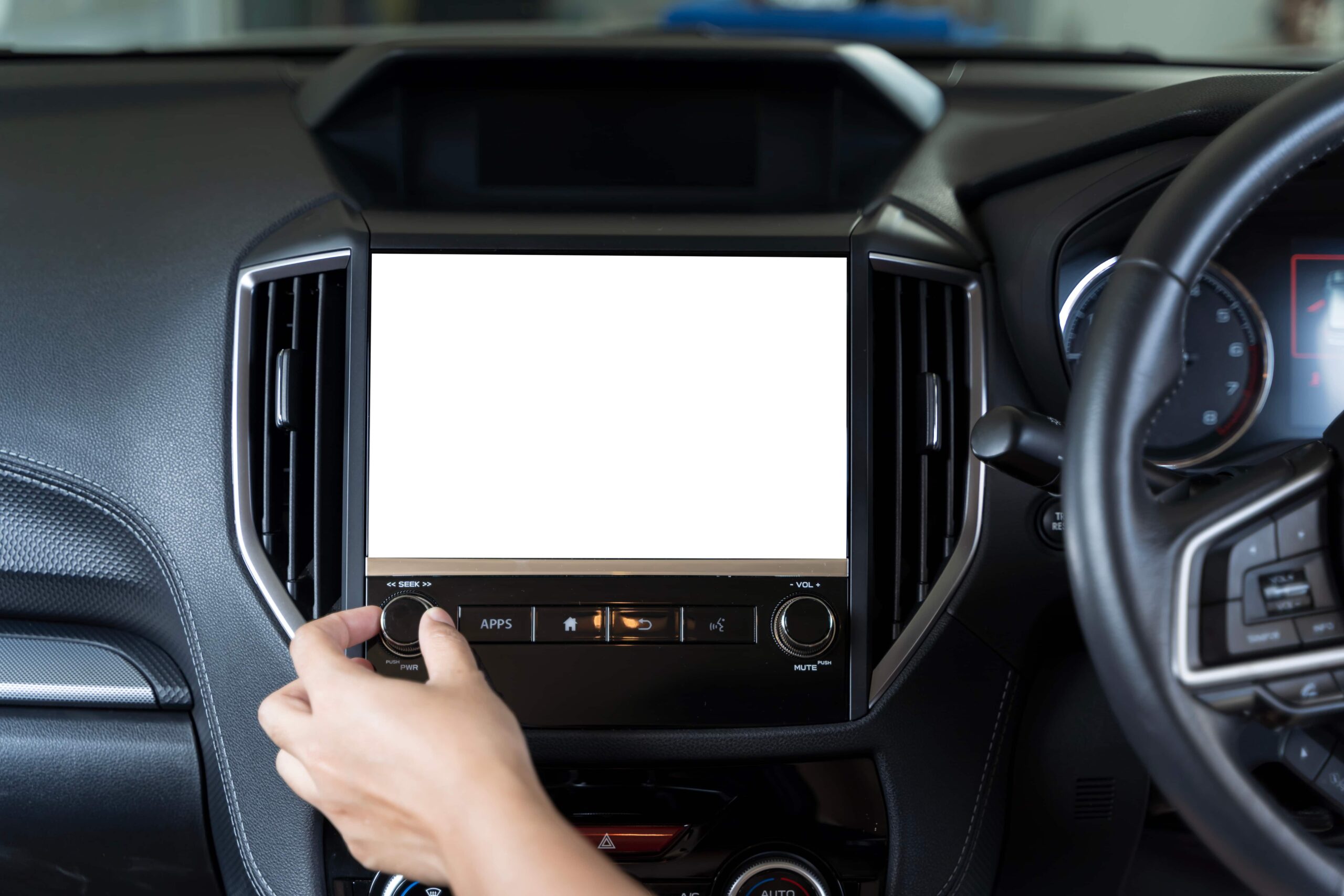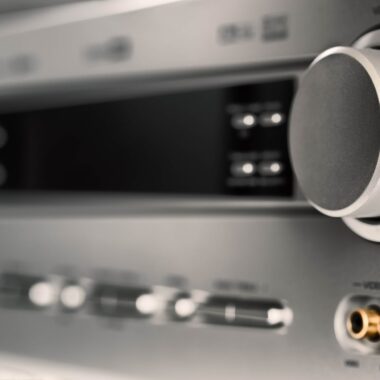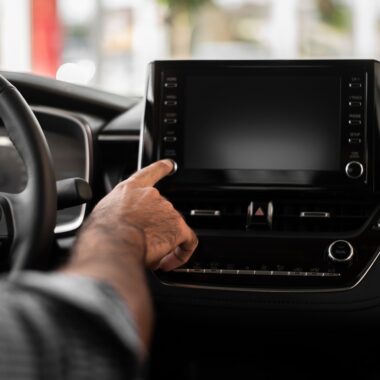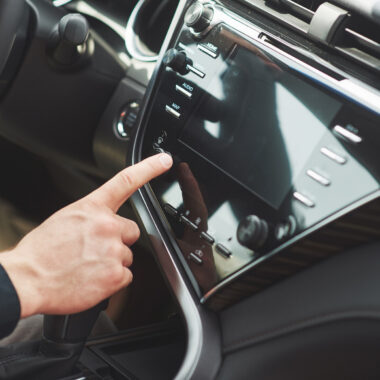Let’s be honest with each other for a second. If you’re anything like me, you appreciate music, and the simple, straight-from-the-factory sound system in your car has probably started to feel… Well, flat. You’ve likely already tried the quick fix, maybe you swapped out the stock speakers for some fancy new components, hoping for a magical, concert-in-the-car transformation. But alas, the difference was underwhelming, right? The sound is louder, sure, but it still lacks that punch, that clarity, that feeling of being genuinely present at the performance.
This is where we stop chasing simple fixes and start talking about the absolute game-changer in the world of high-fidelity automotive sound: the Digital Signal Processing Amplifier, or just DSP Amplifier. It’s not just a piece of equipment; it’s the conductor, the sculptor, and the architect of your perfect in-car concert hall. Trust me, once you understand what a DSP amplifier does, you won’t touch another Car Audio Upgrade without one.
Why Your Factory Car Audio System Just Isn’t Cutting It
Every car manufacturer, bless their hearts, has a long list of priorities, and delivering genuine, high-quality audio is usually somewhere near the bottom. They design systems that are cheap, functional, and fit within a restrictive budget. They’re built for the average listener, not for you, the enthusiast who wants to hear every riff, every drum hit, and every nuanced vocal performance.
The Problem with Stock Sound: A Quick Reality Check
The factory radio in your dashboard isn’t just a source of music; it’s often a terrible signal source. It applies heavy, non-adjustable equalization (EQ) to the audio signal. Why? To try to compensate for the cheap speakers and the odd, acoustically challenging environment of a car cabin. This “fix” makes the stock speakers sound tolerable, but when you feed that heavily pre-EQ’d signal to high-quality aftermarket speakers, the sound is instantly unnatural, muddy, and constrained. It’s like trying to pour a fine, perfectly blended cup of tea through a rusty, old pipe; no matter how good the tea is, it’s going to taste wrong. We need a way to clean that signal up and rebuild it from the ground up, and that’s the starting point for our magic.
The Limitations of Basic Upgrades: Why Speakers Alone Aren’t Enough
Many beginners think that simply replacing the factory door speakers is the ticket to audio heaven. They spend their hard-earned money on component sets, wire them up to the factory head unit, and then wonder why the sound quality is only marginally better. Here’s the brutal truth: speakers are just transducers; they convert an electrical signal into sound waves. If the electrical signal they receive is weak, distorted, or improperly shaped (because of that pesky factory EQ), they can only reproduce those flaws just louder! The missing piece isn’t just more volume; it’s control, and that control is precisely what a DSP amplifier brings to the table, transforming a simple loud system into a truly remarkable system.
Deconstructing the Jargon: What is a DSP?
So, let’s break down the acronym. DSP stands for Digital Signal Processor. Think of the DSP as the absolute brain of your entire audio system, the meticulously detailed conductor of a massive, complex orchestra. While a regular amplifier is just the muscle that takes a small signal and makes it bigger, the DSP takes the signal and makes it smarter.
It works by converting the analog audio signal into digital data, manipulating that data with incredible precision using powerful computer chips, and then converting it back to an analog signal, ready to be powered by the amplification stage. This digital manipulation is where we correct every single imperfection that exists between the recording studio and your ears.
Time Alignment: Making Sound Hit You Perfectly
This is, arguably, the single most impressive feature of a DSP. Think about your seating position in the car; you are rarely, if ever, perfectly centered between the speakers. The door speaker nearest to you might be only a meter away, while the passenger-side speaker is nearly two meters away. Since sound travels at a fixed speed, the music from the passenger side is arriving at your ear significantly later than the music from your door. Your brain perceives this delay as a mushy, uneven soundstage.
Time alignment allows the DSP to deliberately delay the signal to the nearest speakers by milliseconds, ensuring that the sound from all speakers arrives at your ear precisely at the exact nanosecond. The result? A perfectly centered vocalist, a solid drum kit directly in front of you, it’s like the sound is hitting an invisible sonic window right on your dashboard, not just coming from your feet!
Equalization and Crossovers: The Sculpting Tools
We all know basic equalization (EQ) from the bass and treble controls on a home stereo. A DSP, however, offers Parametric EQ, which is exponentially more powerful. Instead of just a single, broad control for “bass,” you get 30 or more individual frequency bands per channel that you can adjust independently. This is surgical precision, allowing a professional to address specific frequency issues, like that annoying boominess at 100Hz or harshness at 4kHz, without affecting the rest of the music.
Furthermore, the DSP controls the crossovers and the filters that ensure the small tweeters only get high notes and the subwoofers only get low notes. The precision and phase control offered by a DSP mean the blend between your tweeters, midrange speakers, and woofers is seamless, creating a unified, coherent sound signature you can’t achieve otherwise.
The Synergy: Combining DSP and Amplifier into One Powerhouse
A DSP Amplifier is the genius of integration. It’s a single unit that combines both the Digital Signal Processor (the brain) and the power amplification stage (the muscle). This is a brilliant solution to the challenges of modern vehicle installation.
A Single, Streamlined Solution for Modern Vehicles
In the old days, a high-end system required separate components: a head unit, a separate DSP unit, multiple amplifiers, and a complex web of wiring. Modern cars, with their tightly integrated infotainment systems, make finding space for all that gear a nightmare. The beauty of the combined DSP Amplifier is its compact form factor, often small enough to be tucked away discreetly under a seat or behind the dash. This simplifies the wiring, reduces the potential for signal interference, and makes the whole system much more stealthy, a massive plus for anyone seeking professional Car Audio Bedford installation.
True Automotive Customization: The Apex Difference
When you choose a DSP amp, you’re not just buying hardware; you are gaining a platform for precise acoustic customization. This is what allows for “active tuning.” The DSP amp is capable of powering and controlling complex multi-way systems, ensuring every driver (tweeter, midrange, woofer) in your car receives a unique, customized signal. When you pair this with a Custom Subwoofer Enclosure, the DSP amp ensures that the new bass frequencies blend seamlessly and perfectly with the rest of your sound, avoiding that disjointed, “boomy” effect that happens in amateur setups. It’s all about creating harmony.
The Unbelievable Benefits: Why a DSP Amp Changes Everything
The effects of utilizing a DSP amplifier are not subtle; they are revolutionary. They elevate your listening experience from “good for a car” to “amazing, regardless of where I’m listening.”
Pinpoint Soundstage: Bringing the Concert to Your Dashboard
This is the holy grail of in-car audio. Once the sound waves are hitting your ears simultaneously (thanks to time alignment), the music isn’t coming from your doors or footwells; it’s projected onto an imaginary stage right in front of you. You can distinctly hear the drummer slightly left, the guitarist somewhat right, and the vocalist perfectly centered, just as the recording engineer intended. This spatial realism transforms the music from background noise into an immersive, detailed experience.
Correction of Acoustic Imperfections: Fixing Your Car’s Faults
Let’s face it, your car is an acoustic nightmare. Think of the reflective glass, the odd angles, and the various-sized speakers placed in low, sub-optimal positions. Every one of these elements introduces a unique acoustic flaw. The sound waves bounce around, creating peaks (too loud) and dips (too quiet) in the frequency response. Only a DSP, with its multi-band parametric EQ, can precisely address and surgically correct these flaws, smoothing out the frequency response curve until it is flat and faithful. It’s essentially acoustic digital surgery performed on your vehicle’s interior.
Future-Proofing Your Car Audio Upgrades
Unlike a traditional amp, which is just a simple power source, a DSP amp is often firmware-upgradable. It can be re-tuned entirely for new speakers, a new vehicle, or even just a change in your personal taste. If you decide to upgrade your speakers later, the DSP amp adapts. If you switch from a large box subwoofer to a stealthy under-seat unit, the DSP is recalibrated. This longevity makes the investment highly valuable, as the “brain” can outlive several generations of other components.
Installation & Integration: It’s More Than Just a Plug-and-Play Job
If the DSP is the brain, then the installation and tuning is the delicate, complicated brain surgery. This is where the difference between a DIY job and a professional service becomes monumentally clear.
The Necessity of Professional Car Stereo Installation
Because the DSP amp is so powerful and precise, it requires an expert hand. You aren’t just hooking up wires; you are mapping complex channels, setting up input summing (to retrieve the full-range signal from a filtered factory signal), and configuring complex crossovers. A small mistake in wiring or configuration can lead to major sound quality issues or even component failure. If you’re looking for professional service from Dashcam Fitters Bedford or a complete audio overhaul, seeking out experts ensures that the potential of this sophisticated hardware is truly unlocked.
Calibration: The Final, Critical Step to Perfection
The calibration process is non-negotiable. It involves a technician using a specialized microphone (a Real-Time Analyzer or RTA) placed in the driver’s seat. The microphone measures the actual sound waves produced in the cabin. The installer then uses the DSP software to adjust the parametric EQ, time alignment, and level matching based on the data provided by the RTA, compensating for the cabin’s specific faults. This meticulous process often takes hours and is the difference between a high-end system that sounds phenomenal and a high-end system that sounds loud. Don’t ever skip the calibration step!
The Investment: Is a DSP Amplifier Worth the Cost?
In short, yes, absolutely. If you are serious about sound quality, if you’ve already invested in quality speakers, and if you can no longer tolerate the acoustic limitations of your vehicle, a DSP amplifier isn’t just a luxury; it’s a necessity.
It’s the one component that can take an already sound system and elevate it into a truly world-class sonic experience. Think of it as the difference between a chef using a home stove versus a fully equipped, professional-grade kitchen. The DSP amplifier gives the installer the tools needed to craft a unique, acoustically perfect environment explicitly tailored to your car and your ears. It is the single most significant leap in sound quality you can make after installing the speakers and an amp.
Final Words
There you have it, the comprehensive breakdown of the component that is single-handedly reshaping the Car Audio Upgrades landscape. The DSP Amplifier is the secret sauce, the conductor, the one device capable of correcting the inherent flaws in your car’s acoustics and finally delivering the soundstage, clarity, and power you’ve always dreamed of.
Don’t let complex technology intimidate you. Instead, let it excite you! When you’re ready to move past mediocre sound and invest in accurate high-fidelity audio, skip the guessing games. Invest in the intelligence that controls them all. Talk to the experts today and discover the actual, breathtaking potential hiding beneath your dashboard.







